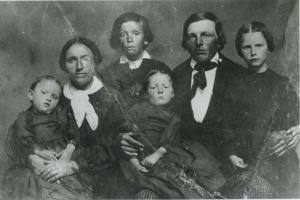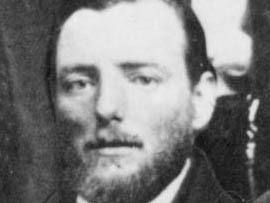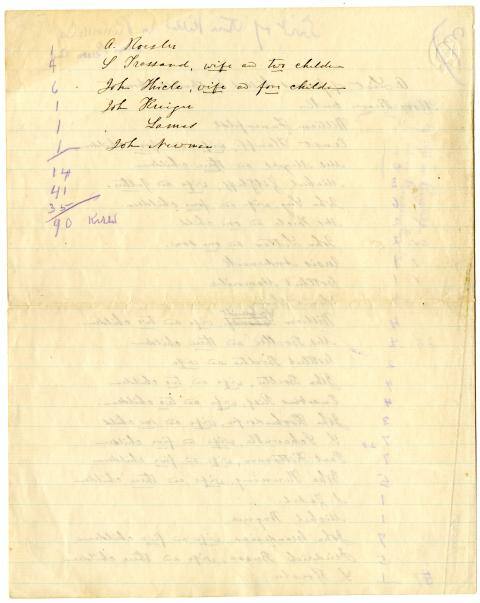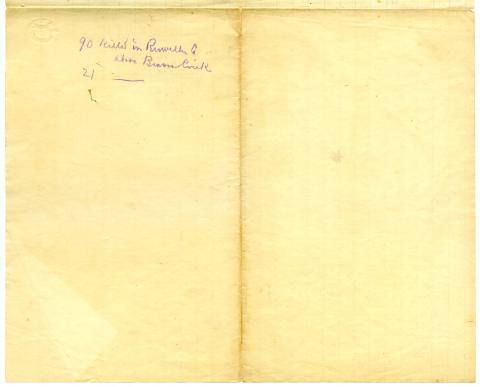Renville County
There were an estimated 1,200 settlers in Renville County in 1862. On August 18 and 19, during the first brutal attacks of the war, more than 160 Renville County residents were killed; more than 100 more were taken captive. With few exceptions, the bodies of those who died are in unmarked graves, where they fell.
Theme:
1862Topics:
Settlers in WarPermissions beyond the scope of this license may be available at Copyright and Use Information.
Key People

The Kochendorfer family
Johann and Catherine Kochendorfer settled with their children in Flora Township, Renville County, in April 1862. On August 18, Johann, Catherine, and their baby, Sarah, were all killed in an attack on their homestead. Johann lived long enough to motion to his children — John, age 11, Rose, age nine, Kate, age seven, and Margaret, age five — to hide in the brush until the attack ended. The children then walked about 11 miles before meeting up with neighbors, all of whom eventually reached Fort Ridgely safely.
The family, from left: Catherine holding Margaret, John, Johann holding Kate, and Rose, about 1860.
Courtesy Brown County Historical Society, New Ulm, MN

Thomas J. Galbraith
"For what reason we have commenced this war I will tell you. It is on account of Major Galbraith."
Little Crow in a letter to Henry Sibley, 1862.
Thomas J. Galbraith was an American politician. In 1857, he signed the Republican version of the Minnesota State Constitution. In the wake of Lincoln’s election in November 1860, Republicans swept the federal jobs in the Northern Superintendency of Indian Affairs and the thirty-six-year-old Galbraith was appointed Sioux Agent. As an agent appointed by the U.S. government, he was charged with fulfilling treaty obligations to the Dakota and with enforcing Indian affairs code, including regulating the traders.
By the spring of 1862, fed up with the inefficiencies of the Indian system in which he was enmeshed, Galbraith resigned his post as Agent, then agreed to hold his resignation until after the annuity payment was made. Throughout the summer he tried to deal with an impossible situation. When annuity payments were delayed, he tried to convince the Dakota to accept greenbacks rather than the gold promised them. He kept the few government rations he had left locked in a warehouse at the Lower Agency and he tried to convince traders to extend more credit to Dakota clients for much-needed food.
On August 18, Galbraith and a group of Civil War recruits known as the Renville Rangers took off from the Upper Agency. Galbraith believed he would deliver the recruits to Fort Snelling, return to the reservation to make the annuity payment, then accept a leadership position in a Minnesota regiment as thanks for his recruiting efforts.
News of the outbreak of war overtook Galbraith and his recruits at St. Peter on August 19. The Renville Rangers changed course and marched to the aid of Fort Ridgely. Meanwhile, Galbraith’s wife, Henrietta, and their two children were being led to safety from their home at the Upper Agency by the Wahpeton Dakota leader Anpetutokeca (John Other Day). Galbraith helped defend Fort Ridgely and was wounded at the battle of Birch Coulee. After the war Galbraith was exonerated in two congressional investigations into allegations that his conduct at the Agency brought on the U.S.-Dakota War. Galbraith died in Cheyenne, Wyoming, in 1909.
Related Documents
.jpg)


List of Whites Killed in Renville County
"List of whites killed in Renville County," 1862.
Stephen Riggs likely made this list while interviewing freed captives at Camp Release, after the war ended and before trials of Dakota men began.
